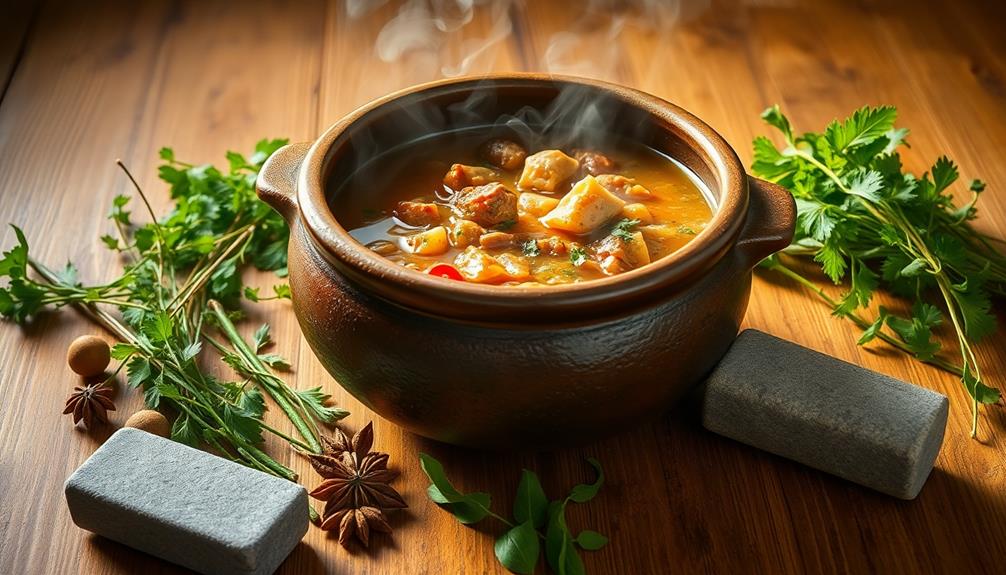Unlock the captivating world of hot stone cooking! This ancient technique lets you create mouthwatering, earthy dishes bursting with unique flavors. Start by heating smooth stones over a roaring fire until they glow red-hot, then carefully arrange your food on top. As the stones slowly release their heat, your ingredients soak up smoky, rustic notes. Bring in fresh, green leaves to trap moisture and infuse even more delectable taste. Whether you're roasting veggies or baking bread, this captivating method will transport you through time and space, revealing the rich culinary traditions that have nourished people for generations. Eager to dive in?
Key Takeaways
- Hot stone cooking is an ancient technique used by various civilizations, providing a unique and flavorful approach to preparing food.
- This method involves cooking on heated stones, resulting in tender, smoky, and earthy dishes like roasted vegetables and baked bread.
- The cooking process involves carefully heating the stones, arranging the food items, and using wet leaves to maintain heat distribution.
- Hot stone cooking is a versatile technique that can be applied to a wide range of dishes, both savory and sweet, allowing for personal culinary expression.
- Engaging in hot stone cooking fosters a connection to traditional culinary practices and provides an enjoyable, hands-on cooking experience.
History
Tracing its origins to ancient civilizations, the practice of cooking with hot stones has been a time-honored tradition. From the Inuit of the Arctic to the Native Americans of the Southwest, communities around the world have harnessed the power of heated rocks to prepare delicious meals.
Imagine the sizzle as a juicy steak meets a scorching stone, or the fragrant steam rising from a pot of stew cooked over a pit of glowing embers. This primal cooking method has endured because it's simple, effective, and produces mouthwatering results.
Whether you're roasting vegetables, baking bread, or steaming seafood, hot stones offer a unique way to infuse your dishes with a rustic, earthy flavor. So why not explore this ancient culinary technique and bring a little prehistoric flair to your modern kitchen? Hot stones can be used in a variety of cooking vessels, including tagines and roman pottery, to create succulent and flavorful meals. The natural heat retention of the stones allows for slow and even cooking, resulting in tender and delicious dishes. So next time you want to add an extra dimension to your cooking, consider the ancient tradition of cooking with hot stones.
With a few hot stones and a bit of creativity, you can unlock a world of flavorful possibilities.
Recipe
Cooking with hot stones is an ancient and captivating method that imparts a unique flavor and texture to food. This traditional technique involves heating stones in a fire or oven, then using them to cook various ingredients. The result is a wonderfully smoky and earthy dish that's sure to impress.
To enhance your cooking experience, consider maintaining a clean kitchen environment to minimize distractions and ensure safety while handling hot materials—control pet hair like a pro can help keep your space tidy if you have pets around.
The beauty of this cooking method lies in its simplicity and the way it allows the natural flavors of the ingredients to shine. By using the heated stones as a cooking surface, you can achieve a level of even heat distribution that's difficult to replicate with modern appliances. This makes it an ideal choice for dishes that benefit from slow, gentle cooking.
- 4 medium-sized river stones
- 2 pounds of beef, lamb, or pork, cut into 1-inch cubes
- 2 onions, sliced
- 3 carrots, peeled and sliced
- 2 cups of mixed mushrooms, sliced
- 4 cloves of garlic, minced
- 2 tablespoons of olive oil
- 1 cup of beef or vegetable broth
- Salt and pepper to taste
Preheat your oven to 400°F (200°C). Place the river stones on a baking sheet and heat them in the oven for 45 minutes to 1 hour, or until they're scorching hot.
While the stones are heating, prepare the ingredients. In a large pot or Dutch oven, heat the olive oil over medium-high heat. Add the meat, onions, carrots, and mushrooms, and sauté until the vegetables are tender and the meat is browned on all sides, approximately 10-15 minutes.
Add the garlic and continue cooking for 2-3 minutes, until fragrant. Pour in the broth and season with salt and pepper to taste.
Once the stones are piping hot, carefully transfer them to the pot with the ingredients. Cover the pot and reduce the heat to low. Allow the dish to simmer for 1-2 hours, or until the meat is fork-tender. The heated stones will continue to cook the food, creating a deliciously smoky and tender result.
Be sure to handle the stones with caution, as they'll be extremely hot.
Cooking Steps
Gather up those smooth stones and get them nice and hot!
Then, carefully place your food right on top of the sizzling stones.
Don't forget to cover the stones with the food so it can cook all the way through.
Step 1. Gather and Heat the Stones

Selecting the proper stone is the initial step in this time-honored cooking method. Look for stones that are smooth, dense, and able to withstand high heat without cracking. River rocks or fieldstones work well, but avoid any that are porous or have rough surfaces.
Once you've gathered your stones, it's time to heat them up. The best way to do this is by building a fire and allowing the stones to become thoroughly heated. Arrange the stones in the center of the fire, making sure they're not touching each other.
Let them sit for at least an hour, or until they're glowing red-hot. Be very careful when handling the stones – they'll be extremely hot!
When the stones are ready, use long tongs or heat-resistant gloves to carefully transfer them to your cooking area. Arrange them in a circle or pattern that suits your needs, whether you're steaming, baking, or simmering your food.
The intense heat from the stones will cook your meal to perfection, infusing it with a unique, earthy flavor.
Step 2. Place Food on Stones
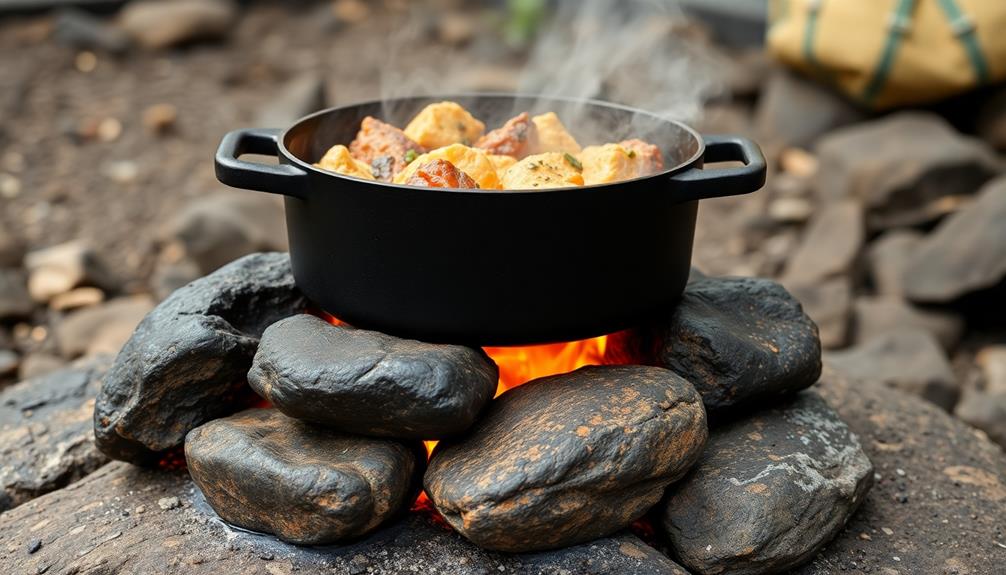
With the hot stones ready, it's time to start cooking. Carefully place your food items directly on the hot stones. This could be anything from fish fillets to sliced vegetables. Make sure to evenly distribute the food so it cooks evenly. You can use tongs or a long fork to gently lower the food onto the stones.
As the food sizzles and sears, the hot stones will impart a delicious, smoky flavor. The high heat will quickly cook the outside, while leaving the inside tender and juicy. Keep a close eye on the food, flipping or rotating it as needed to ensure even cooking.
The stones will maintain their heat, allowing you to cook multiple batches if desired. This ancient cooking method isn't only fun and unique, but it also allows the natural flavors of the ingredients to shine. With a little practice, you'll be whipping up fantastic stone-cooked meals in no time!
Step 3. Cover Stones With Food
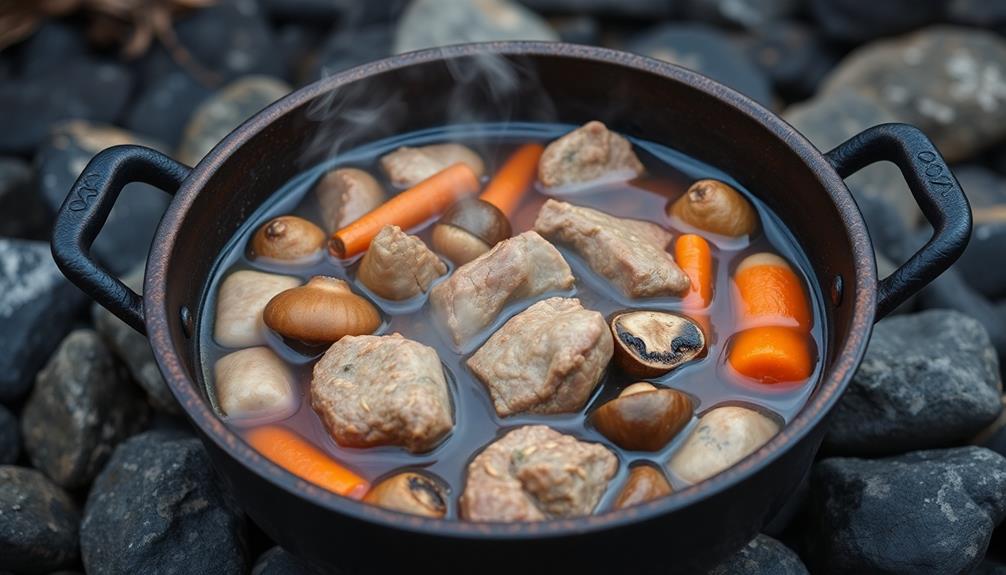
Once the stones are hot, you can start arranging your food items on top. Carefully place your ingredients directly onto the scorching stones, making sure to cover the entire surface. Whether you're cooking fish, vegetables, or even fruit, the goal is to create an even layer that will cook thoroughly.
Remember to arrange the food in a way that allows for even heat distribution. Leave a little space between each item so the steam can circulate and cook everything evenly. You may need to experiment with the placement and quantity to get the best results.
As the food starts to sizzle and steam, you'll know the cooking process has begun. Keep an eye on the ingredients, turning them occasionally to ensure even browning or charring, depending on your desired outcome.
The hot stones will do all the work, infusing your meal with a unique, smoky flavor that you just can't achieve with other cooking methods.
Step 4. Wet Leaves Insulate Cooking Stones
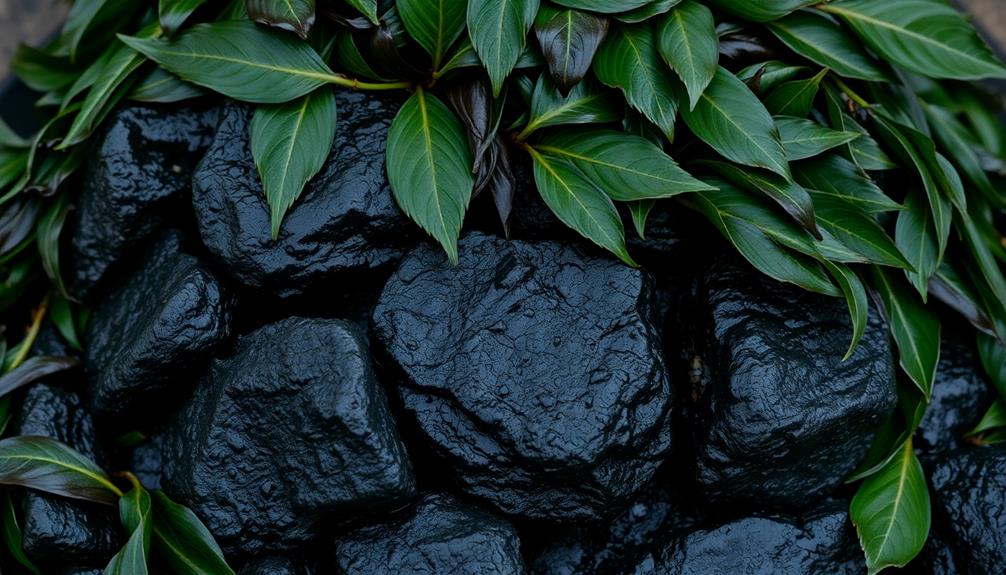
To further enhance the cooking process, you'll want to incorporate wet leaves onto the hot stones. The wet leaves serve as an insulating layer, helping to retain the heat and evenly distribute it throughout your food. This gentle, indirect cooking method ensures your ingredients are cooked thoroughly without burning.
As the leaves begin to steam, they'll create a moist environment inside your cooking pit or vessel. This moisture helps tenderize tougher cuts of meat and allows vegetables to cook to perfection. The leaves also impart a subtle, earthy flavor that complements the flavors of your dish.
Be sure to use fresh, green leaves for the best results. Avoid dry or brittle leaves, as they won't provide the same insulating properties.
Experiment with different types of leaves, such as oak, maple, or grape, to see how they impact the final taste of your meal. With this simple addition, you'll unlock a whole new world of flavorful, stone-cooked delicacies.
Step 5. Allow Stones to Cool
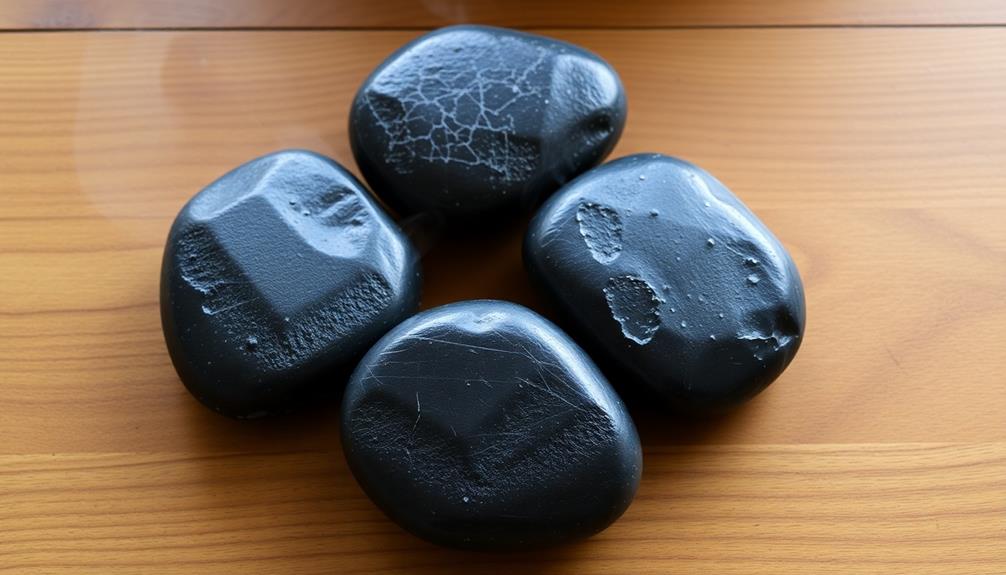
After your food has finished cooking, let the hot stones rest and gradually cool down. This is an important step to ensure the stones don't crack or break.
Don't be tempted to remove them right away – give them about 30 minutes to an hour to cool off. This slow cooling process helps the stones retain their shape and strength for future use.
While the stones are cooling, you can start cleaning up your cooking area. Tidy up any mess and set aside the cooking tools you used. This way, everything will be ready for your next stone-cooking adventure.
Once the stones have fully cooled, you can pick them up and store them in a dry place, like a cloth bag or box. They'll be ready to heat up and use again the next time you want to try this ancient cooking method.
Final Thoughts
Cooking with hot stones is a fascinating and ancient technique that has stood the test of time. As you've learned, it requires a bit of patience and care, but the results can be truly delightful.
Whether you're preparing a hearty stew, roasting vegetables, or baking bread, the unique flavors and textures produced by this method are well worth the effort.
Don't be afraid to experiment and put your own spin on things. Try different types of stones, play with cooking times and temperatures, and get creative with your ingredient combinations.
The beauty of cooking with hot stones is that it's a versatile technique that can be adapted to suit your tastes and culinary preferences.
As you continue on your culinary journey, remember to have fun and enjoy the process. Cooking with hot stones is a wonderful way to connect with the rich traditions of the past while creating delicious, nourishing meals for the present.
Bon appétit!
Frequently Asked Questions
How Do I Choose the Right Type of Cooking Stones?
When choosing cooking stones, consider their density, heat retention, and safety. Opt for stones that are non-porous, can withstand high temperatures, and are smooth to prevent injuries. Consult with experts to ensure you select the right type for your cooking needs.
Can I Use Stones From My Backyard for Cooking?
You can use stones from your backyard for cooking, but it's crucial to choose the right type. Avoid soft, porous, or sedimentary stones, as they can crack or release harmful chemicals when heated. Opt for dense, igneous rocks instead.
How Do I Clean and Prepare the Cooking Stones?
Before using stones for cooking, you'll need to thoroughly clean and prepare them. Start by washing the stones with soap and water, then dry them completely. Once ready, you can use the stones for your cooking needs.
Is It Safe to Use Hot Stones for Cooking Indoors?
Using hot stones for indoor cooking isn't entirely safe. You'll need proper ventilation to prevent smoke buildup, and take precautions to avoid burns. Consider consulting a professional before attempting this cooking method indoors.
How Long Do the Cooking Stones Retain Heat During the Meal?
The cooking stones should retain heat for 30-60 minutes during your meal. Their insulating properties allow them to stay hot and evenly cook your food, but you'll want to monitor them closely for safety.
